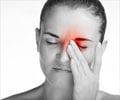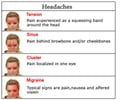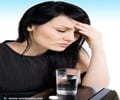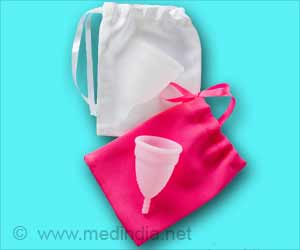Pharmacologic agents, complementary therapies as well as new therapies for prevention of menstrually associated migraines have been included in revised guidelines.

Migraine treatment aims to stop or prevent the progression of a headache or reverse a headache that has started. Preventive treatment, which is given even in the absence of a headache, aims to reduce the frequency and severity of the migraine attack and also improves the patient's quality of life.
In 2012, Quality Standards Subcommittee of the American Academy of Neurology (AAN) and the American Headache Society (AHS) classified the medications used for migraine into seven categories (levels A, B, C, U, A negative, B negative, C negative) based on their efficacy for migraine prophylaxis. Apart from the pharmacologic agents and complementary therapies, the guidelines also addressed new therapies for the short-term prevention of menstruation-associated migraines.
LEVEL A PHARMACOLOGIC AGENTS: The efficacy of these drugs in preventing migraine have been established in more than two class I clinical trials. These are: Antiepileptic Drugs: Divalproex Sodium and Sodium Valproate, Topiramate: Antiepileptic drugs are thought to prevent migraine by increasing levels of gamma amino butyric acid (GABA) in the brain; GABA is a neurotransmitter which suppresses the abnormal electrical activity in the brain. Results of a clinical trial showed that divalproex sodium XR (extended release) is efficacious when used as a single drug to prevent migraine. Another clinical trial showed that topiramate achieved a higher mean reduction in frequency, intensity, and duration of headaches as compared to propranolol; however high-dose topiramate could cause significant adverse reactions such as fatigue, memory lapse, taste disturbance, weight loss, and paresthesia.
Beta Blockers: Though it is not very clear how they prevent migraine, beta blockers such as propranolol and metoprolol are now commonly used for migraine. The efficacy of propranolol has been well established in clinical trials and is one of the most commonly prescribed beta blocker for migraine prevention. In a study comparing metoprolol and aspirin, it was found that metoprolol was more effective than aspirin in reducing the frequency of migraine, but the aspirin group experienced lesser adverse effects.
LEVEL B PHARMACOLOGIC AGENTS: These drugs are probably effective in preventing migraine. Besides the antidepressants venlafaxine and amitriptyline and the triptans naratriptan and zolmitriptan, this group also included the beta blockers atenolol and nadolol. Antidepressants: Studies have shown that venlafaxine and amitriptyline achieved reductions in migraine frequency, intensity, and duration. It was shown that although both drugs are effective, venlafaxine XR was much more favorable and tolerable than amitriptyline.
LEVEL C PHARMACOLOGIC AGENTS: These include drugs such as lisinopril, candesartan clonidine, guanfacine, carbamazepine, pindolol and nebivolol. These drugs are possibly effective in the prevention of migraine.
LEVEL U PHARMACOLOGIC AGENTS: This group includes drugs such as gabapentin, picotamide, warfarin and acenocoumarol, fluoxetine, fluvoxamine, protriptyline, bisoprolol, nifedipine, nicardipine, nimodipine, verapamil, acetazolamide and cyclandelate. There is inadequate or conflicting data to support or refute the claim that these drugs are useful in the treatment of migraine prevention.
NEGATIVE PHARMACOLOGIC AGENTS: These drugs are possibly or probably ineffective in the prevention of migraine. Lamotrigine: A study comparing the efficacy of low dose topiramate and lamotrigine found that topiramate was superior to placebo and lamotrigine, and lamotrigine was ineffective versus placebo and topiramate for migraine prophylaxis. However, the researchers said that lamotrigine’s efficacy should not be automatically discounted, because the study had certain limitations such as the duration of the study was short and the statistical analysis power was insufficient.
NSAIDs: There has been conflicting reports on aspirin on whether it is efficacious for migraine prophylaxis; therefore this agent remains a level U recommendation.
COMPLEMENTARY THERAPIES
Level A Complementary Therapies (Butterbur): The extract of Petasites hybridus plant, also known as butterbur, is a powerful migraine-preventive agent.Butterbur’s headache-preventive capabilities are mainly due to its anti-inflammatory and muscle-relaxant effects. In a double-blind randomized study, Petasites 75 mg twice daily was shown to reduce the frequency of migraine attacks.
Level B Complementary Therapies Magnesium, Riboflavin, and Feverfew: The herb feverfew (Tanacetum parthenium) has been used for many years for headache, migraine and fever.
Magnesium is a mineral found mainly in green leafy vegetables, whole grains etc. Several studies have shown positive results for the use of magnesium in migraine.
Riboflavin, in high doses, has also been shown to help migraine sufferers.
Individual clinical trials have supported the efficacy of these complementary therapies when used alone; thus these agents could be used as an adjunctive therapy to other proven pharmacologic agents.
Reference:
Pharmacologic and Complementary Therapy for Migraine Prophylaxis; Amne et al; US Pharmacist 2013
Source-Medindia














